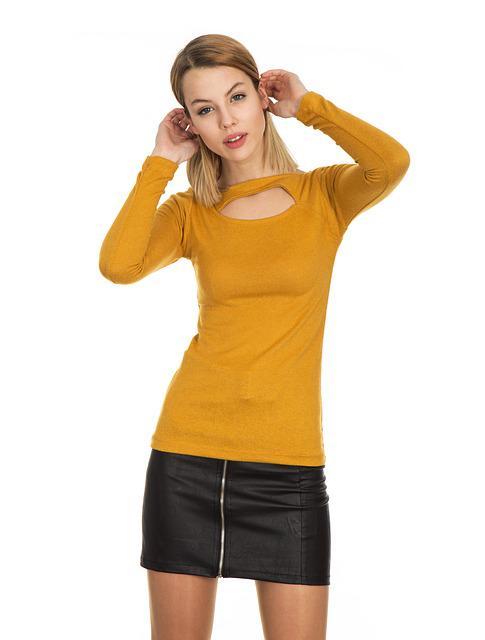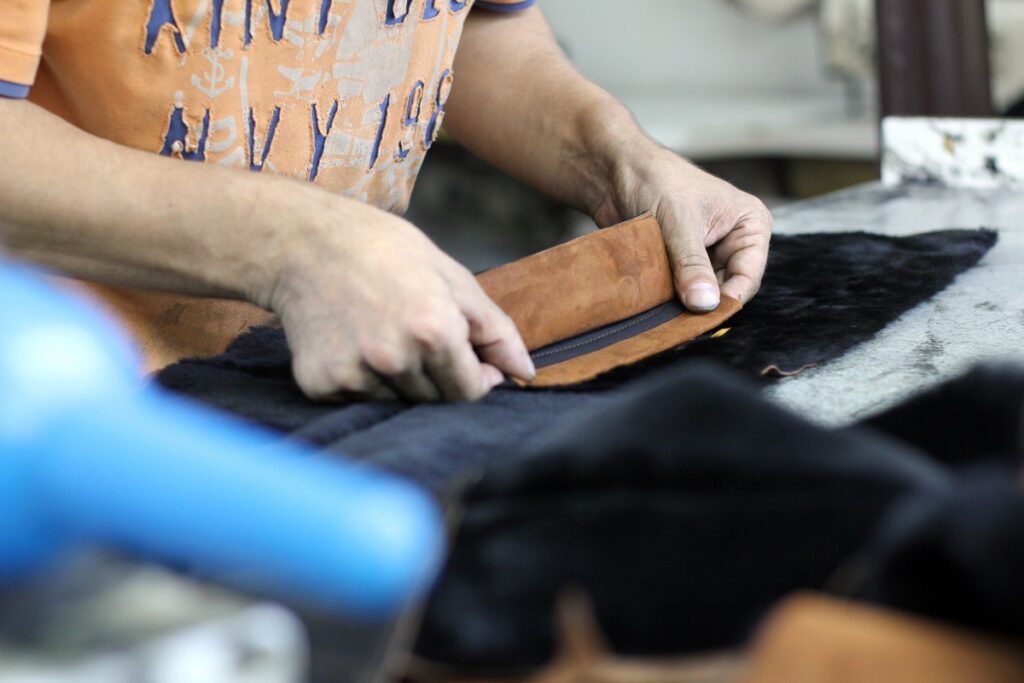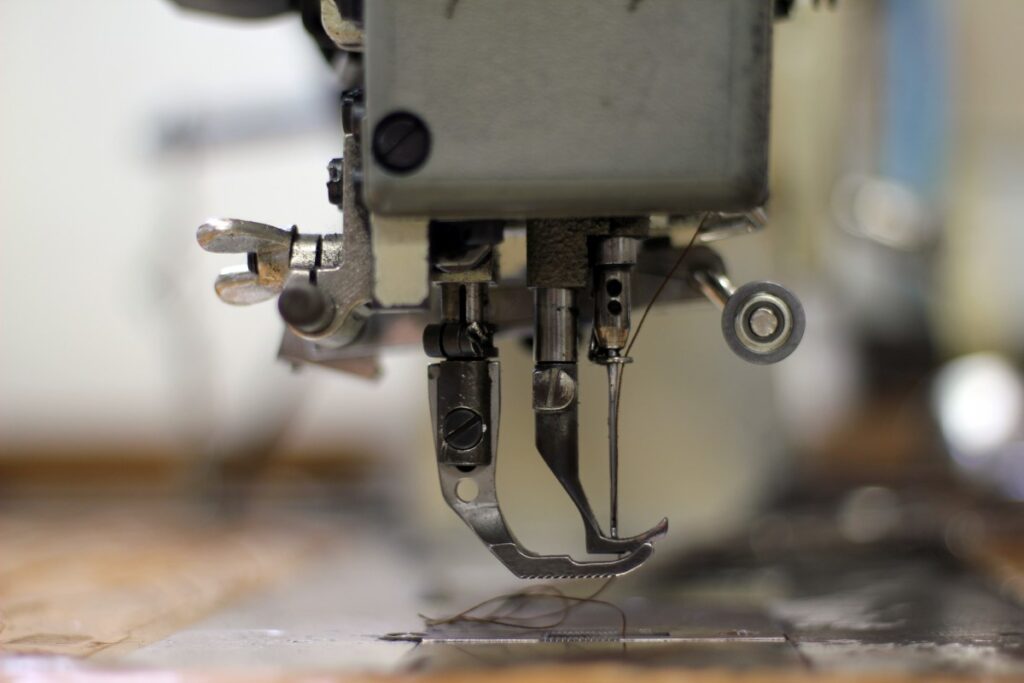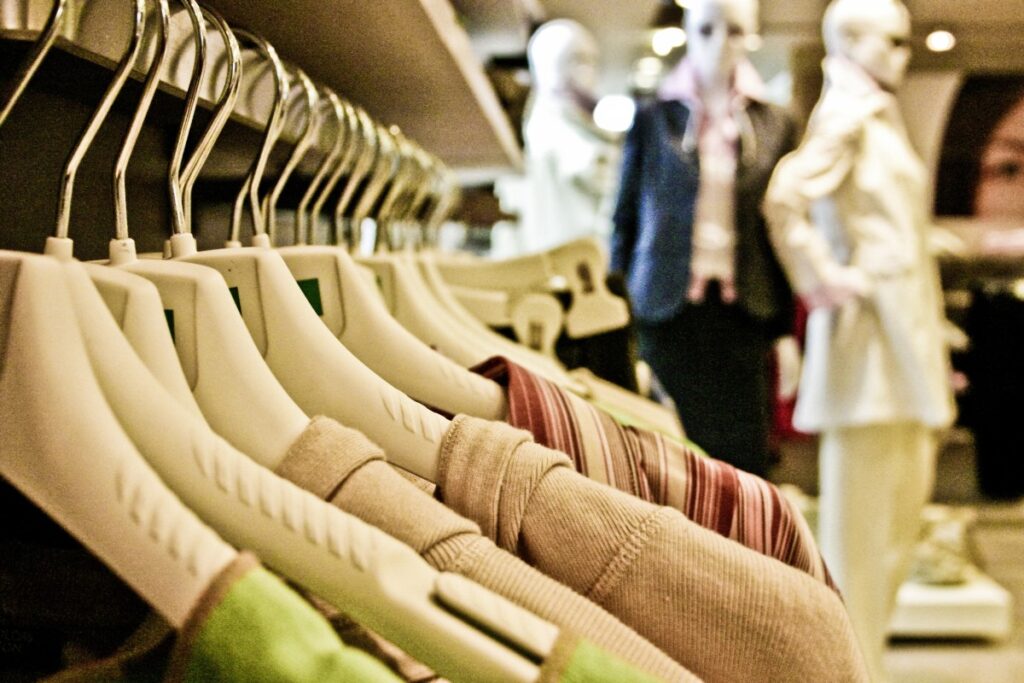
When it comes to “fast fashion”, quantity trumps quality every time. Pieces of clothing are bought, worn a handful of times, then simply thrown into a wardrobe to gather dust. In today’s article, we’ll be explaining what happens to those pieces, the drastic consequences fast fashion has – not just for the environment, but also for the people who work in the industry – and the possible ways for you to make a difference.
“CLEARANCE SALE” ALL YEAR-ROUND

Fast fashion is currently shaping the world of fashion, and with it, the wardrobes of Austria’s women and men. Influencers on Instagram, TikTok and other social media channels present new trends every day, linking the outfits to a webshop where they can be ordered a couple of clicks later. But what actually is fast fashion? The Cambridge Dictionary defines the term “fast fashion” as clothing which is produced and sold so cheaply that consumers can afford to buy new clothing more often.
Once upon a time, there were essentially four new collections a year – one for each new season. Today, however, the fashion giants are working round the clock to bring out up to 52 mini collections, which can then be sold through their stores or online. For them to be able to do this and still turn a profit, the firms have to outsource production to low-income countries. Worldwide, something like 120 billion new pieces of clothing are produced every year; according to Greenpeace, one in five of these items is essentially never worn. One of the reasons why people are buying so many more clothes than they need, of course, is the bargain-basement price. That means – especially at a time when every penny of monthly income counts – there’s no need to feel guilty about buying several pieces, because they cost next to nothing anyway. It’s not just about this insatiable thirst for trends created by the fashion industry, of course; it’s also important to remember that the exponentially-rising global population means more and more clothing is being produced, then disposed of almost immediately.
LOW-QUALITY GOODS
Fast fashion causes a vast range of problems. The big chains such as H&M and Zara can never sell anything close to all the pieces in a collection, of course, and unsold goods then have to be cleared from the shelves to make space for the latest new thing. So what happens to those pieces of clothing when they become yesterday’s news? Some end up in Eastern Europe – in Bulgaria, for example, where impoverished locals use the textiles to heat their homes when they can’t afford to buy firewood. The same often happens, unfortunately, to all those discarded clothes thrown into old-clothes containers by the roadside. The sacks of clothes end up in collection centres, where they are examined, but no more than a tiny minority of the pieces are in sufficiently good condition to be sold second-hand or reused.

A year ago, Hamburg began dismantling all its old-clothing containers, because the city could no longer cope with the flood of textile goods being discarded. As if this weren’t enough, selling the pieces to a company that recycles textiles is no longer profitable, since the quality of the materials used in most fast fashion products is so low that they not good enough to be transformed into a dishcloth. The cost of having clothes destroyed professionally has risen enormously in recent years.
CLOTHES RECYCLED INTO MORE CLOTHES – A LIE PERPETUATED BY THE FASHION INDUSTRY
With increasing numbers of people concerned to ensure they are consuming sustainably nowadays, fashion companies have been jumping on the bandwagon, offering what they describe as “recyclable” fashion. At H&M, customers have also been able to return so-called “dust collector” pieces to the company’s branches since 2013. One textiles expert from Hochschule Reutlingen insists, however, that the claim that the clothes are being reused – “clothes recycled into more clothes” – is just false.
MOUNTAINS OF OLD CLOTHES IN THE DESERT
Chile’s Atacama Desert is also suffering from this global overconsumption of cheap textile goods. Something like 40 tons of discarded clothes are dumped there every year. Some of the pieces fashion producers can’t sell in Austria are exported to Latin America. The harbour town of Alto Hospicio is an important hub. Any usable pieces are sorted there and sold on, with the remainder ending up in the nearby desert, causing a whole host of new problems. The dry climate means fires are continually breaking out; synthetic fibres are highly combustible and cause air pollution. Although the local population suffers due to these mountains of rubbish, the city is in no position, either logistically or financially, to prevent illegal dumping of clothes in the desert.
SHEIN – THE TRENDIEST FAST FASHION APP

The Chinese shopping app Shein gained a foothold in the Austrian market long ago. The company was founded in 2008, and has grown rapidly in the intervening years. Anyone who has their photograph taken in the new jeans they have just bought on Shein can then upload the photo to the app and rate the product, earning points for future purchases. This makes it possible to save even more on the clothing, which is already dirt-cheap. Fashion influencers are happy to present purchases on their various social media channels, ensuring their followers’ desire to buy is kept very much alive.
EXPLOITATIVE CORPORATE STRUCTURE
Because 60 percent of the clothing on offer is made using polyester and a further 30 percent with other chemical fibres, the success of the cheap fashion app damages the environment on the one hand. This is far from all, however: Swiss NGO Public Eye has also uncovered the terrible working conditions in place at the factories used to produce the cheap clothes. Shein appears to produce at 17 facilities, with most coming from Guangdong, a millions-strong city in southern China. Several of its factories can be found alongside one another in the city, accommodated in what were once residential blocks. Employees there report that they work for up to 75 hours a week, and have just one day off a month. This is illegal under Chinese labour law.
QUANTITY BEFORE QUALITY
Most female and male workers in China’s textile industry come from the provinces, where levels of income are far lower. Since they are paid per piece of clothing produced, staff have to work quickly to earn more money, Shein employees report – something only possible because standards of quality are so low anyway. None of the members of staff questioned had ever signed a contract. They receive no basic pay or compensation for overtime. The research reaches the following conclusion: “Shein systematically exploits the fact that these staff are prepared to go without minimum levels of safety, time off and quality of life – because they have hardly any alternative”.
FROM THE CRADLE TO THE CRADLE
Clearly, this situation cannot be allowed to go on as it is. Many wise heads have considered what needs to be done to ensure the trend for fast fashion is able to proceed sustainably. The owner of one clothes recycling company, for example, would set a tax on clothing –for fashion companies and consumers alike. This would create an incentive for people to shop more responsibly.

The grand aim is to shift the focus back towards greater quality and sustainability. One of the counter-movements, for example, known as “slow” or “cradle to cradle” fashion, is becoming increasingly popular with young, future-oriented fashion producers. The goal of this approach is to develop waste-free business in the form of sophisticated circular flows. A number of companies are producing genuinely sustainable items of clothing. German firm Merz B Schwanen produces slow fashion in the truest sense. It uses old-fashioned machines, which take an hour to produce material for a single T-shirt. Its designs don’t reflect current trends; instead, they are understated and timeless. The Swedish fashion start-up ASKET also does “anti-fashion”. The company brings out just one collection a year, and the origin of all the materials used, from fibres through to buttons, is supposed to be totally transparent to customers.
Simply buying sustainable clothing is not sufficient, however. We could all benefit from a healthy degree of minimalism. Before making a purchase, you should take into consideration whether you really need do the piece in question, and are going to wear it regularly. Instead of always following the latest trends, it is better to create your own style. If you own clothing you no longer like, you could try passing it on to friends. Another good way of enjoying your favourite pieces for longer, of course, is repairing and sewing together holes. And when levels of demand are lower, less gets produced – meaning that every single one of us can do our own bit in the struggle against the fast fashion industry.
Translation by Tim Martinz-Lywood, European Exchange Ltd.
www.european-exchange.co.uk
